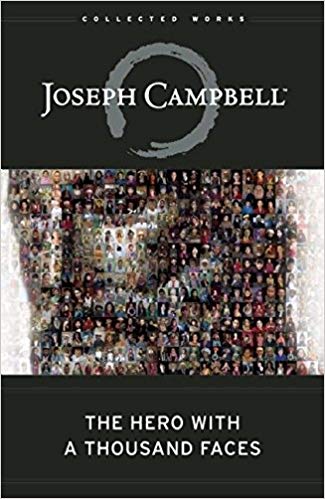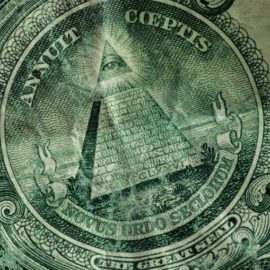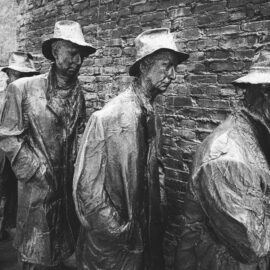

This article is an excerpt from the Shortform summary of "The Hero with a Thousand Faces" by Joseph Campbell. Shortform has the world's best summaries of books you should be reading.
Like this article? Sign up for a free trial here .
What are some good monomyth examples? How can they help me understand the concept of the monomyth?
We’ll cover two monomyth examples, or examples of the hero’s journey, and discuss the basic elements of the monomyth.
What Is a Monomyth?
Before we look at some monomyth examples, let’s answer the question, What is a monomyth?
Although the settings and plots of myths vary widely across time and space, from the Homeric poems of ancient Greece to the enlightenment of the Buddha in India to the Christian story of the birth and resurrection of Christ, they all share a certain core set of themes, a standard template. This template is the mythological adventure of the hero—someone who sets out on a journey, often with the help of a sage guide and allies along the way, overcomes obstacles, and achieves some sort of transformation which he or she then shares with the world. This can either be the sharing of a literal bounty (bringing abundance and prosperity back to a hungry and impoverished community) or a deeper, more spiritual redemption of a wayward and fallen people.
The point in space and time where divine wisdom is imparted to the physical world is known as the World Navel. It is the center of the universe, the spot from which all life grows: it is the portal between our world and the world of the divine. It is represented in a variety of ways across religious and mythological traditions and throughout time—it is Rome in Catholicism, Mecca in Islam, or the Immovable Spot in the Buddha legend—but the idea is always the same. We’ll see this in the monomyth examples below.
This transformation of the hero comes from tapping into a source of deep spiritual wisdom, which is often revealed to have been within the soul or psyche of the hero from the beginning. Thus, the archetypal hero’s journey involves a spiritual awakening, an attainment of some piece of the gods. We see this, for example, in the story of Prometheus, who ascended to heaven and stole fire from the gods, which he then imparted to the world. We also see this in the myth of Jason, who sailed through the Clashing Rocks and defeated a dragon to obtain the Golden Fleece, which enabled him to win back his throne from a usurper.
The essential feature, the basic common denominator of mythology, is the monomyth. It is the core structure of the myths, the journey that all heroes must undergo. It involves three rites of passage—separation, initiation, return. From the myths of the ancient Egyptians and the medieval Arthurian legend to the folk-tales of the native Maoris of New Zealand, the pattern of the hero’s journey usually follows this cycle: a separation from the world he or she has always known (embarking on the quest), gaining some spiritual or other-worldly power, and a return in which they share the boon of the new power with humanity.
Let’s discuss two monomyth examples to illustrate the pattern.
Monomyth Example #1: The Struggle of the Buddha
The first monomyth example is that of the Buddha. In the story of the Struggle of the Buddha, the founding story of Buddhism, we see all three elements of the monomyth. First, we see separation. The prince Gautama Sakyamuni (also known as Siddartha Gautama and the Future Buddha) escapes his ancestral home and cuts off his royal locks. He assumes the costume of a monk, wandering through the world and living a life of extreme austerity and asceticism. During this time, he transcends to the eight stages of meditation.
Next, we witness initiation. One day, he tosses an empty bowl into a river, and sees that the bowl flows upstream. This is the signal that his time of ultimate enlightenment is near at hand. He journeys to the Tree of Enlightenment, where he meets Kama-Mara, the god of love and death. Kama-Mara attempts to dislodge him from the tree, deploying all manner of fearsome monsters and deities at Gautama. But in repelling all of Mara’s onslaughts, the Future Buddha acquires knowledge of his previous existences, the power of omniscience, and a divine understanding of the chain of causation. He becomes Buddha, “The Enlightened One.”
Finally, we see return. After this victory, Buddha initially despairs of being able to communicate his message. But the god Brahma dissuades him from this pessimism and urges him to teach gods and men the path of enlightenment. Thus, Buddha returns to the cities and the hustle and bustle of the world from which he had originally come to share the gift of his knowledge and wisdom with the world.
Monomyth Example #2: The Legend of Moses
The cycle also shows itself in a story more familiar to Western audiences, that of Moses in the Old Testament. This is another monomyth example. After the Exodus from Egypt, Moses leads the Israelites through the wilderness of Sinai (departure). Moses ascends Mount Sinai to receive the Tables of the Law from God, who commands Moses to share them with the Israelites, the chosen people (initiation).
When Moses returns to share the word of God with the people, God shakes the bounds of the world, unleashing fire, earthquake, storm, and hail. God appears from all directions, to demonstrate His all-knowing, all-seeing power. The crowd gathers to see the spectacle, but there is room for all—God is one with the people Israel (return).
———End of Preview———

Like what you just read? Read the rest of the world's best summary of "The Hero with a Thousand Faces" at Shortform . Learn the book's critical concepts in 20 minutes or less .
Here's what you'll find in our full The Hero with a Thousand Faces summary :
- How the Hero's Journey reappears hundreds of times in different cultures and ages
- How we attach our psychology to heroes, and how they help embolden us in our lives
- Why stories and mythology are so important, even in today's world






